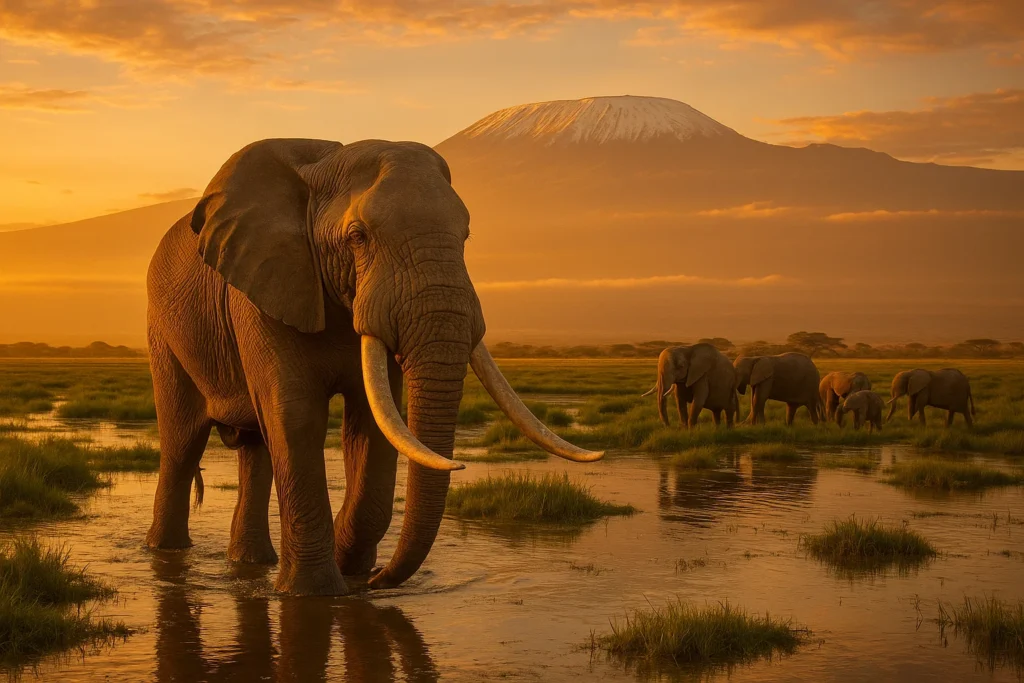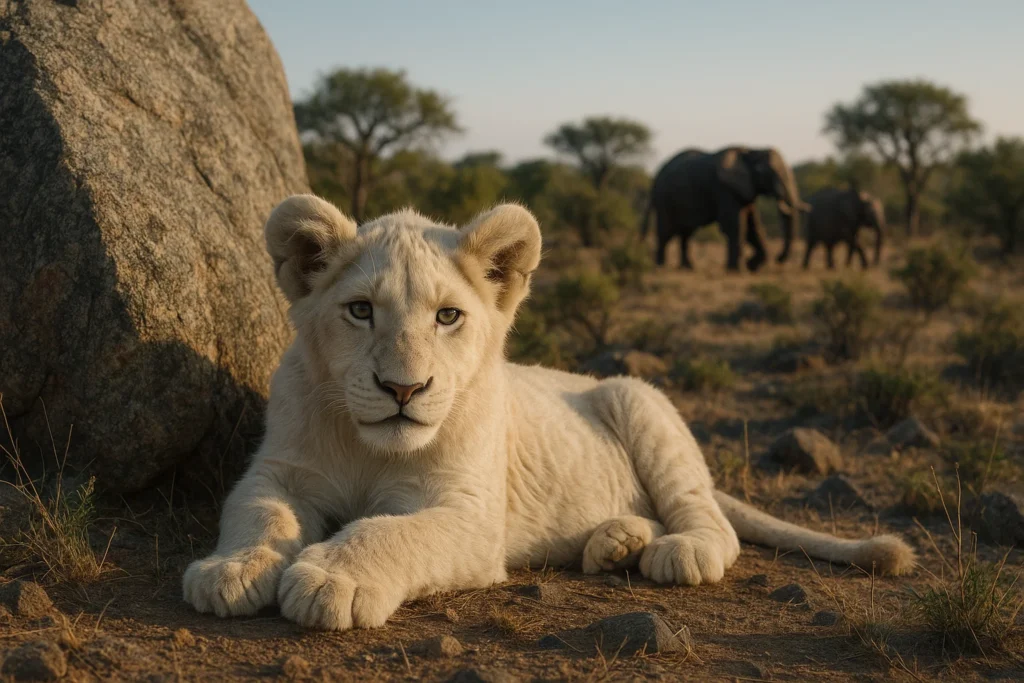Amboseli National Park isn’t just one of the best places to see elephants in Africa — it’s one of the best places to understand them. With iconic backdrops, enormous tuskers, rich family structures, and long-term research, elephant encounters in Amboseli are more than visual highlights; they’re deeply meaningful experiences.
Why Amboseli is world-famous for elephants
Home of super tuskers
Amboseli hosts a rare population of “super tuskers” — male elephants with tusks so large they touch the ground. These giants are increasingly rare across Africa due to poaching and trophy hunting, but Amboseli remains a vital refuge thanks to Kenya’s ban on elephant hunting.
Unmatched visibility
The park’s open plains and swamplands make elephants easy to spot year-round. Whether they’re cooling off in marshes or kicking up dust at sunset, the unobstructed views create unforgettable moments for safari-goers and photographers.
Amboseli Elephant Research Project
Since the 1970s, this project has tracked thousands of individual elephants. Their work has produced some of the most detailed knowledge of elephant behavior, lifespan, social roles, and migration patterns in the world. It’s common for local guides to recognize individual elephants and share their stories.
What you’ll witness: elephant behavior in the wild
Matriarch-led family groups
Elephant society is matriarchal. You’ll observe herds led by wise, older females who guide their families to water, shelter, and safety. Watch as they communicate through body language, rumbles, and tactile signals.
Calf rearing and social play
Young elephants are playful, curious, and always close to their mothers. You’ll often see them learning social cues, mock-charging, or being gently disciplined by aunties and older siblings.
Bulls in musth
Amboseli is also one of the best places to witness male elephants in “musth” — a period of heightened hormones and assertive behavior. It’s fascinating (and safe from a distance) to observe how these solitary bulls behave during mating season.
Seasonal gatherings
During dry spells, elephants converge around permanent water sources like the park’s central swamps. These seasonal congregations can bring dozens — sometimes hundreds — of elephants into view at once.
Conservation matters: what’s at stake
Cross-border threats
While Kenya protects its elephants, some tuskers migrate into Tanzania, where trophy hunting is still allowed. Several iconic bulls from Amboseli have tragically been lost this way, raising international concern.
Importance of old bulls
Large bulls aren’t just showpieces — they’re genetically vital and play key roles in stabilizing elephant society. Losing even one can disrupt social structures and breeding dynamics.
Community involvement
Amboseli’s conservation success is partly thanks to local Maasai communities. Through eco-tourism, education, and conflict mitigation, many now see elephants as assets rather than threats.
Tips for meaningful elephant encounters
- Go during dry season (June–October): You’ll find more elephants gathered at swamps and waterholes.
- Choose a lodge near the action: Properties close to swamps often have elephants walking through or nearby.
- Book a knowledgeable guide: Those familiar with the Elephant Research Project can enrich your safari with personal stories and behavioral insights.
- Bring binoculars and a good zoom lens: Even with close sightings, these tools reveal fine details.
- Practice respectful watching: Keep noise low, avoid fast movements, and let the elephants dictate the moment.
Why these encounters are unforgettable
| Feature | Why It’s Special in Amboseli |
|---|---|
| Super tuskers | Rare, iconic bulls with ground-length tusks |
| Social insight | Observe structured family dynamics up close |
| Swamp scenes | Elephants wading through water with Kilimanjaro views |
| Research depth | Stories of individual elephants enhance the experience |
| Photography | Soft light, open space, and epic backdrops |
Conclusion
Elephant encounters in Amboseli are more than just safari highlights — they’re a window into the intelligence, emotion, and endurance of one of Earth’s most iconic animals. Here, amidst the acacia trees and swaying grass, you don’t just see elephants. You connect with them.
FAQs
A super tusker is a male elephant with unusually large tusks that may reach the ground. They are genetically rare and often over 40 years old.
While nature has no guarantees, Amboseli offers some of the most reliable elephant sightings in Africa.
It’s not open to casual visitors, but some tour operators can arrange special experiences by request.
Yes, as long as you follow your guide’s instructions and keep a respectful distance.
June to October is ideal due to dry conditions and higher elephant concentrations around water sources.
Some are naturally tuskless; others may have lost them due to fights, breakage, or historical poaching.
Yes, some bulls roam across the border where protection levels vary, posing a conservation challenge.






